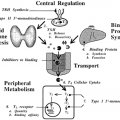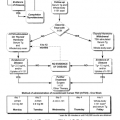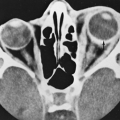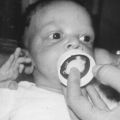APPLICATIONS, TECHNIQUES, AND INTERPRETATION OF THYROID UPTAKE
Part of “CHAPTER 34 – THYROID UPTAKE AND IMAGING“
APPLICATIONS OF UPTAKE MEASUREMENTS
A thyroid scan primarily provides information as to the location, configuration, and distribution of radioactivity, but does not provide a quantitative estimate of global thyroid function and therefore is not indicated for this purpose. The 24-hour radioiodine thyroid uptake test was an important part of the workup for thyroid dysfunction in the past; however, it is not as critical today because of the availability of sensitive techniques for measuring serum levels of thyroid hormone and TSH. Nevertheless, the uptake test, together with the thyroid scan, plays an important role in the diagnosis of hyperthyroidism due to destructive thyroiditis, which is characterized by very low uptake of radioiodine and 99mTc pertechnetate. More importantly, the radioiodine uptake is also used in calculating the therapeutic amount of radioiodine to be administered in Graves disease and toxic nodular disease (see Chap. 42). Its occasional use in the T3 suppression and perchlorate discharge tests is described later.
Stay updated, free articles. Join our Telegram channel

Full access? Get Clinical Tree







